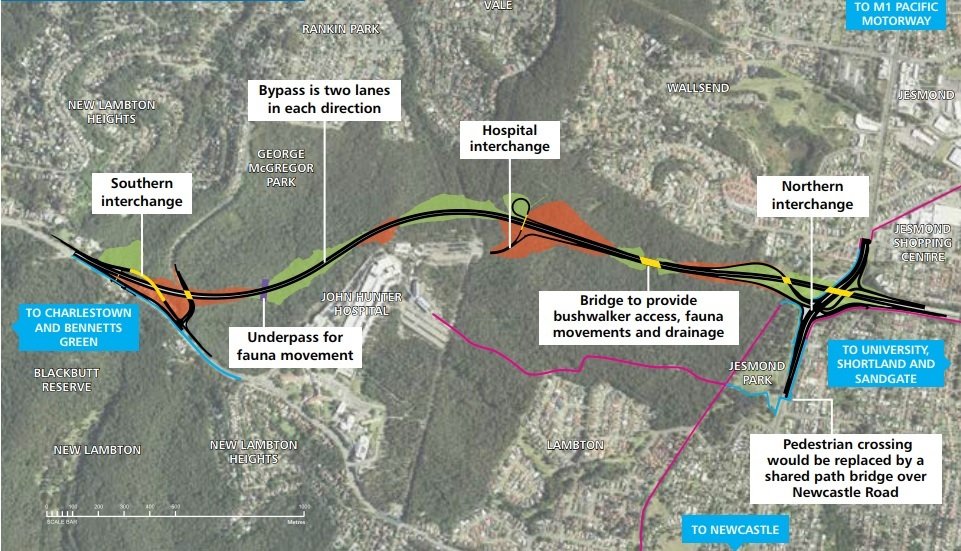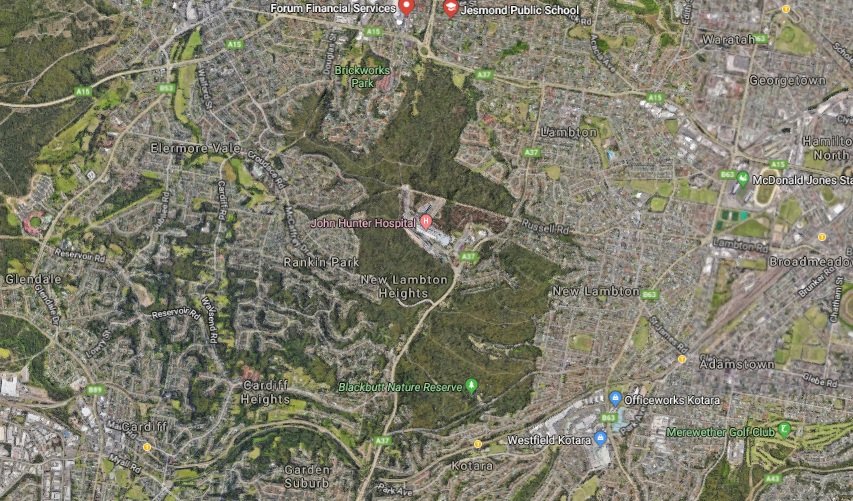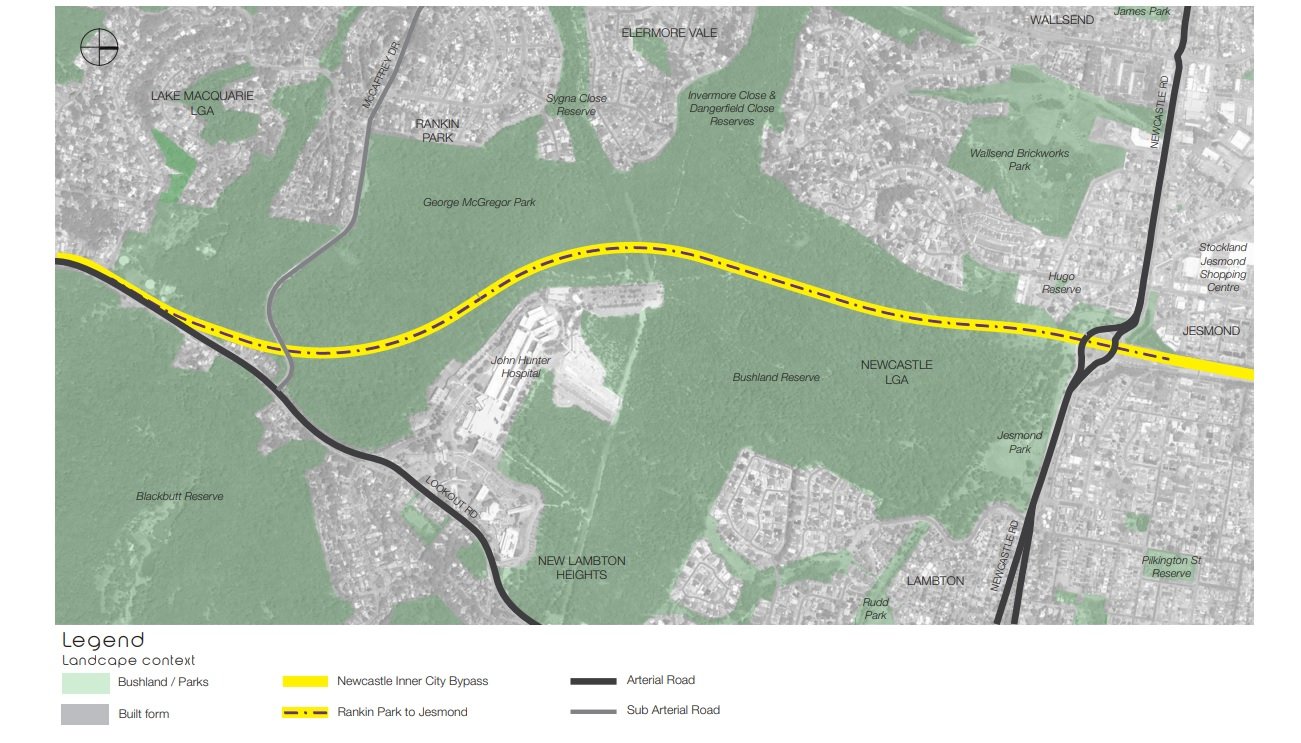
Jesmond bush
The sacrifice of a beloved and biodiverse stretch of bushland in Jesmond to accommodate Newcastle’s expanding metropolitan road network has been met with deep regret by many who have grown up seeking quiet refuge and serenity in bush which as of March 2023 is being bulldozed
The Jesmond to Rankin Park instalment of the Newcastle Inner City Bypass is a 3.4km four-lane divided road, comprising the final piece of road network infrastructure that has been in planning and various phases of construction since the 1980s.
Habitat for 5 Threatened fauna species, and 3 Threatened flora species will be destroyed to accommodate the project.
The Biodiversity Assessment Report from June 2018 cited the "…removal of about 320 identified hollow-bearing trees…" with construction requiring 51 hectares of native vegetation to be cleared or disturbed, of which 43.5 hectares is “…known foraging habitat for the Squirrel Glider".
The construction footprint impinges on the George McGregor Landcare Reserve, and is just 6km from the Hunter Estuary Wetlands, RAMSAR listed migratory shorebird site.
The development will further degrade habitat connectivity for sensitive arboreal and bird species in one of the most highly-fragmented LGA’s between Barrington Tops and the Hawkesbury River.



Environment expert disputes Transport for NSW claim dead Kangaroo was not displaced by Inner City Bypass Construction
Newcastle Herald, Matthew Kelly, June 22 2023
“Sightings of both these species locally [Powerful Owl and Squirrel Glider] have dwindled and the removal of an estimated 320 hollow-bearing trees to accommodate the bypass is nothing short of shameful...” - HCEC Coordinator, Jo Lynch

Whilst suitable habitat for 27 fauna species is present, the following Threatened fauna species were surveyed;
Little Lorikeet (Glossopsitta pusilla)
Powerful Owl (Ninox strenua)
Grey-headed Flying-fox (Pteropus poliocephalus)
Little Bent-wing Bat (Miniopterus australis)
Eastern Bent-wing Bat(Micronomus norfolkensis (syn. Mormopterus norfolkensis)
Eastern Freetail-bat (Micronomus norfolkensis (syn. Mormopterus norfolkensis)
Four Threatened flora species are present within the projected clearing footprint:
Black-eyed Susan (Tetratheca juncea)
Small-flower Grevillea (Grevillea parviflora subsp. parviflora)
Magenta Lily Pilly (Syzygium paniculatum)
The Leafless Tongue-orchid (Cyrptostylis hunteriana) and Newcastle Doubletail (Diuris praecox) are also expected to be impacted.
Syzigium paniculatum (Magenta Lilly Pilly) 2000-2070. Sighted since 2000. Range contraction by 2070 under all 4 climate futures.
Cryptostylis hunteriana (Leafless Tongue Orchid) 2000-2070. Sighed since 2000. Regional extinction by 2070 under all 4 climate futures.

Shots supplied by Wilderness Witness,
Oct 3, 2022















